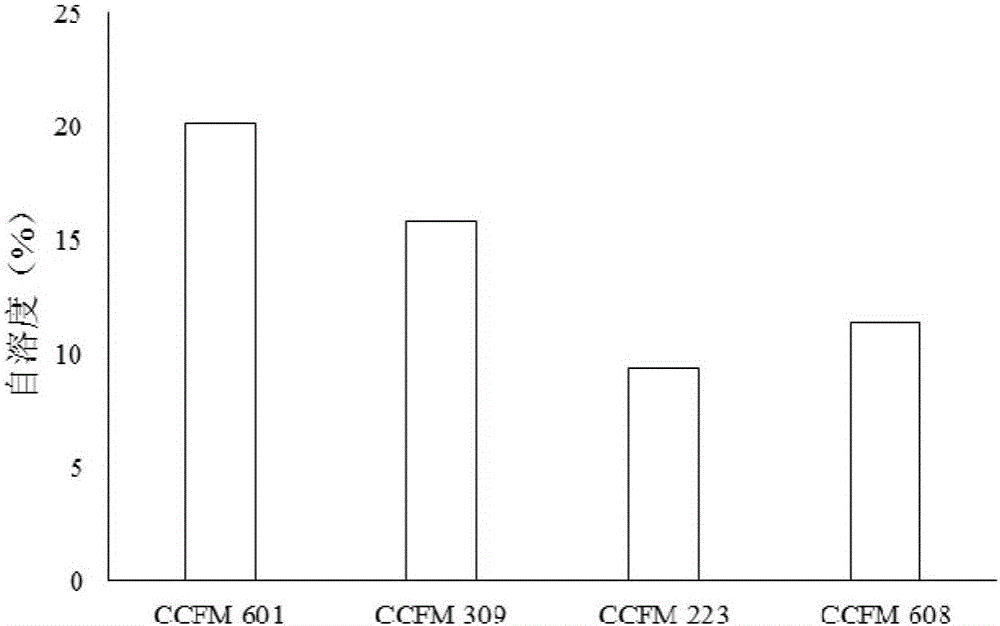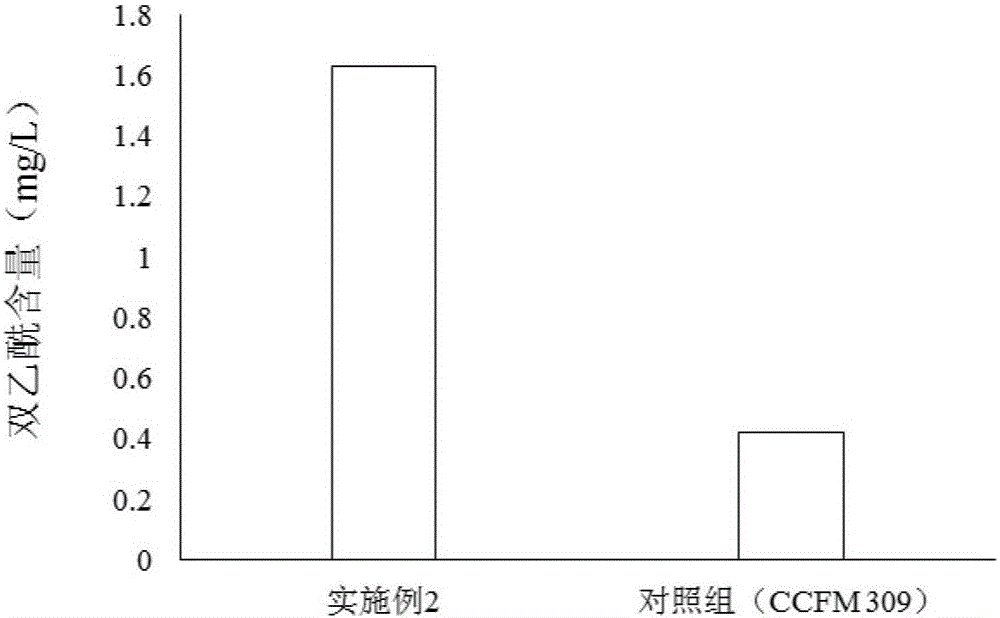Lactobacillus plantarum having diacetyl synthesis capacity and application of lactobacillus plantarum
A technology of Lactobacillus plantarum and strains, applied in the direction of Lactobacillus, application, bacteria used in food preparation, etc., to achieve the effect of improving product sensory quality characteristics and increasing content
- Summary
- Abstract
- Description
- Claims
- Application Information
AI Technical Summary
Problems solved by technology
Method used
Image
Examples
Embodiment 1
[0039] Embodiment 1: the strain cultivation method of Lactobacillus plantarum CGMCC No.12227
[0040] Purification and isolation of MRS plate: aseptically operate the inoculation loop to pick Lactobacillus plantarum CGMCC No.12227, streak on the sterilized MRS plate, place the plate in a 37°C incubator for 48 hours, and pick a single colony for microscopic examination , to achieve the purification and separation of strains.
[0041] Strain activation: Take out the frozen strains from the -80°C refrigerator, inoculate 100 microliters of bacterial liquid into sterilized MRS liquid medium after thawing, grow at 37°C for 18 hours, streak, and place in solid MRS at 37°C After culturing for 48 hours, a single colony was selected and inoculated in sterilized MRS liquid medium, and the experiment was carried out after three generations of activation.
[0042] Composition of MRS liquid medium: 20g glucose, 10g beef extract, 10g peptone, 5g yeast extract, 5g sodium acetate, 2g dipotass...
Embodiment 2
[0044] Example 2: Tolerance experiment of Lactobacillus plantarum CGMCC No.12227 to different pH values
[0045] Inoculate the cryopreserved Lactobacillus plantarum CGMCC No.12227 of the present invention in the MRS liquid medium, culture at 37°C for 24 hours, subculture 2-3 times, take 200 μL of the bacterial solution and inoculate it into 10.0 mL with pH values of 4.0 and 5.0 respectively , 6.0 MRS liquid medium, cultivated at 37°C for 24 hours, and measured the OD of Lactobacillus plantarum CGMCC No.12227 in different acidic environments 600 value, the experimental results are as figure 1 shown. Depend on figure 1 It can be seen that Lactobacillus plantarum CGMCC No.12227 can maintain growth under the acidic condition of pH 4.0, and has good acid resistance.
Embodiment 3
[0046] Example 3: Tolerance experiment of Lactobacillus plantarum CGMCC No.12227 to different concentrations of salt solutions
[0047] The cryopreserved Lactobacillus plantarum CGMCC No.12227 of the present invention was inoculated in MRS liquid medium, cultured at 37°C for 24 hours, subcultured for 2-3 times, and 200 μL of the bacterial solution was inoculated into 10.0 mL of After 4%, 6% MRS liquid medium, culture at 37°C for 24 hours, and measure the OD of Lactobacillus plantarum CGMCC No.12227 under different salt concentration environments 600 value, the experimental results are as figure 1 shown. Depend on figure 1 It can be seen that Lactobacillus plantarum CGMCC No.12227 can still grow under the condition of 6% salt concentration, and has good salt tolerance.
PUM
 Login to View More
Login to View More Abstract
Description
Claims
Application Information
 Login to View More
Login to View More - R&D
- Intellectual Property
- Life Sciences
- Materials
- Tech Scout
- Unparalleled Data Quality
- Higher Quality Content
- 60% Fewer Hallucinations
Browse by: Latest US Patents, China's latest patents, Technical Efficacy Thesaurus, Application Domain, Technology Topic, Popular Technical Reports.
© 2025 PatSnap. All rights reserved.Legal|Privacy policy|Modern Slavery Act Transparency Statement|Sitemap|About US| Contact US: help@patsnap.com



